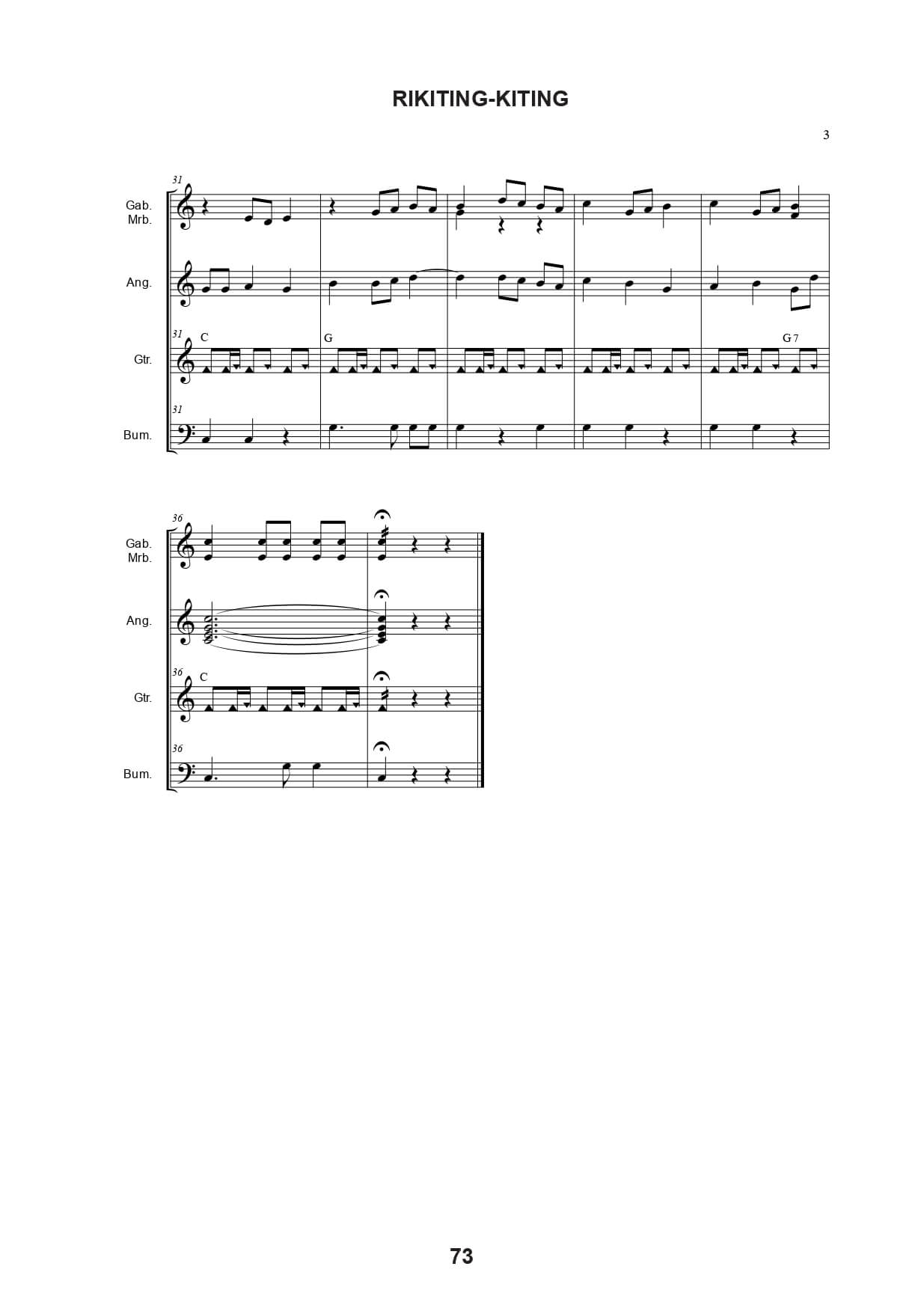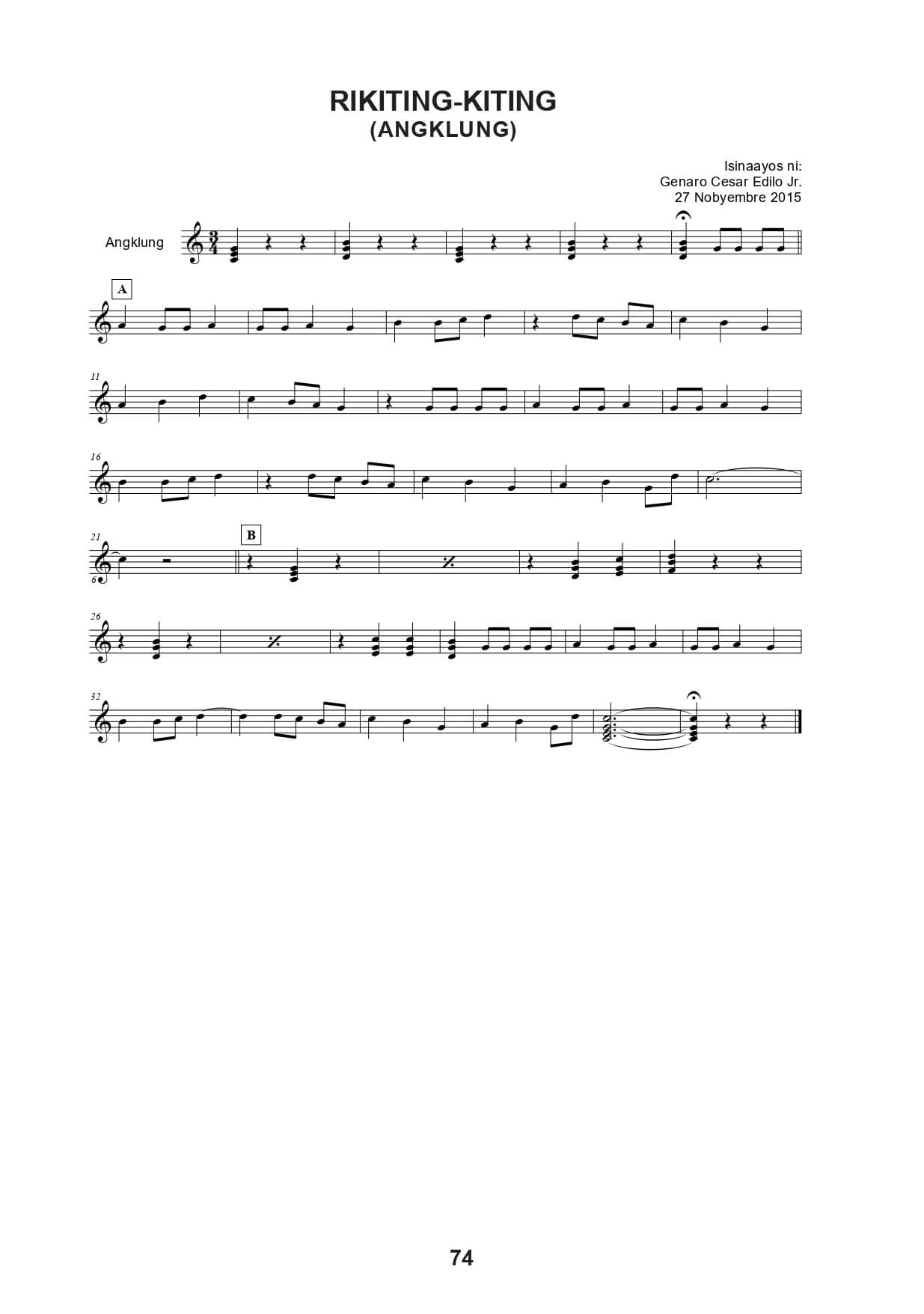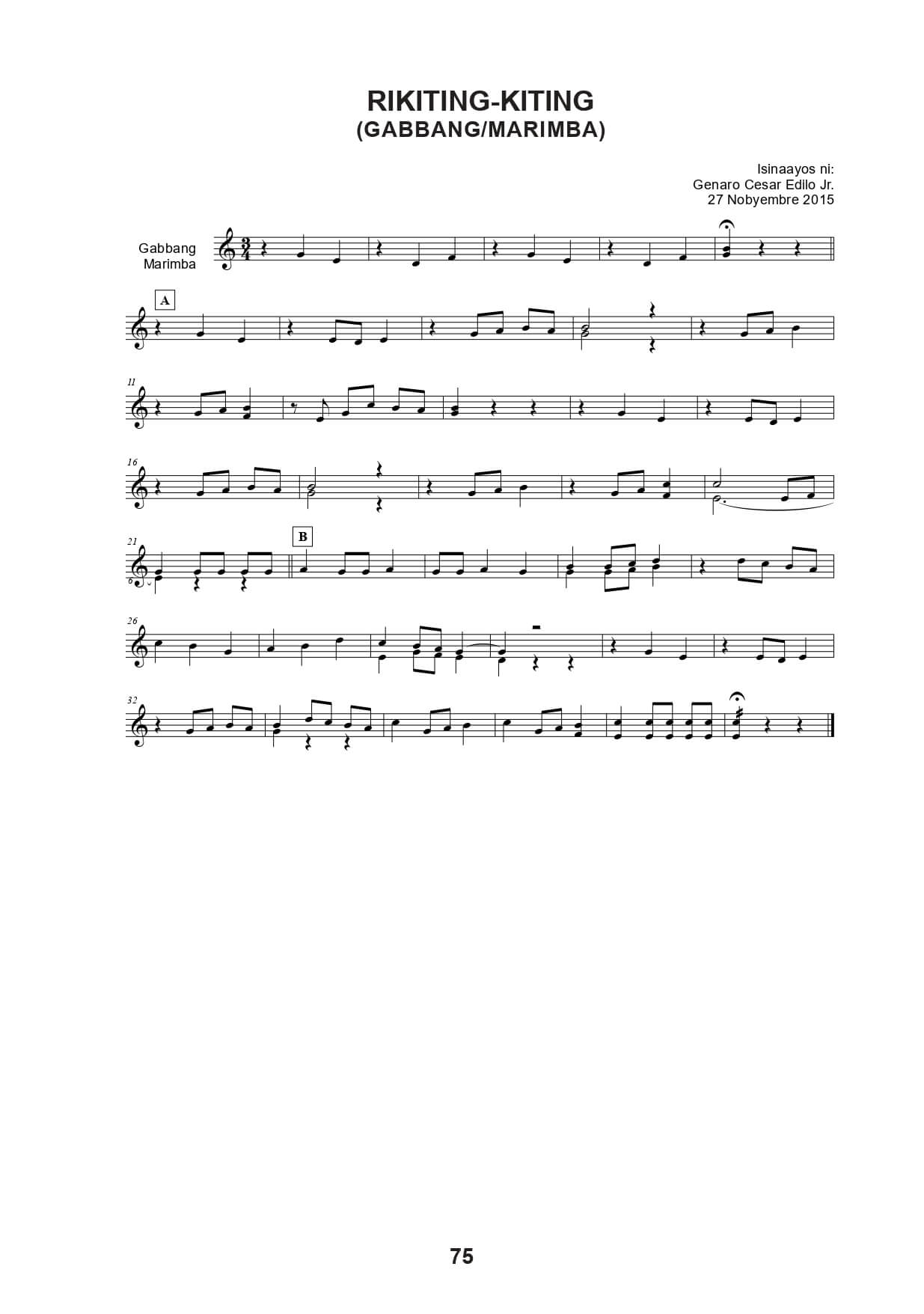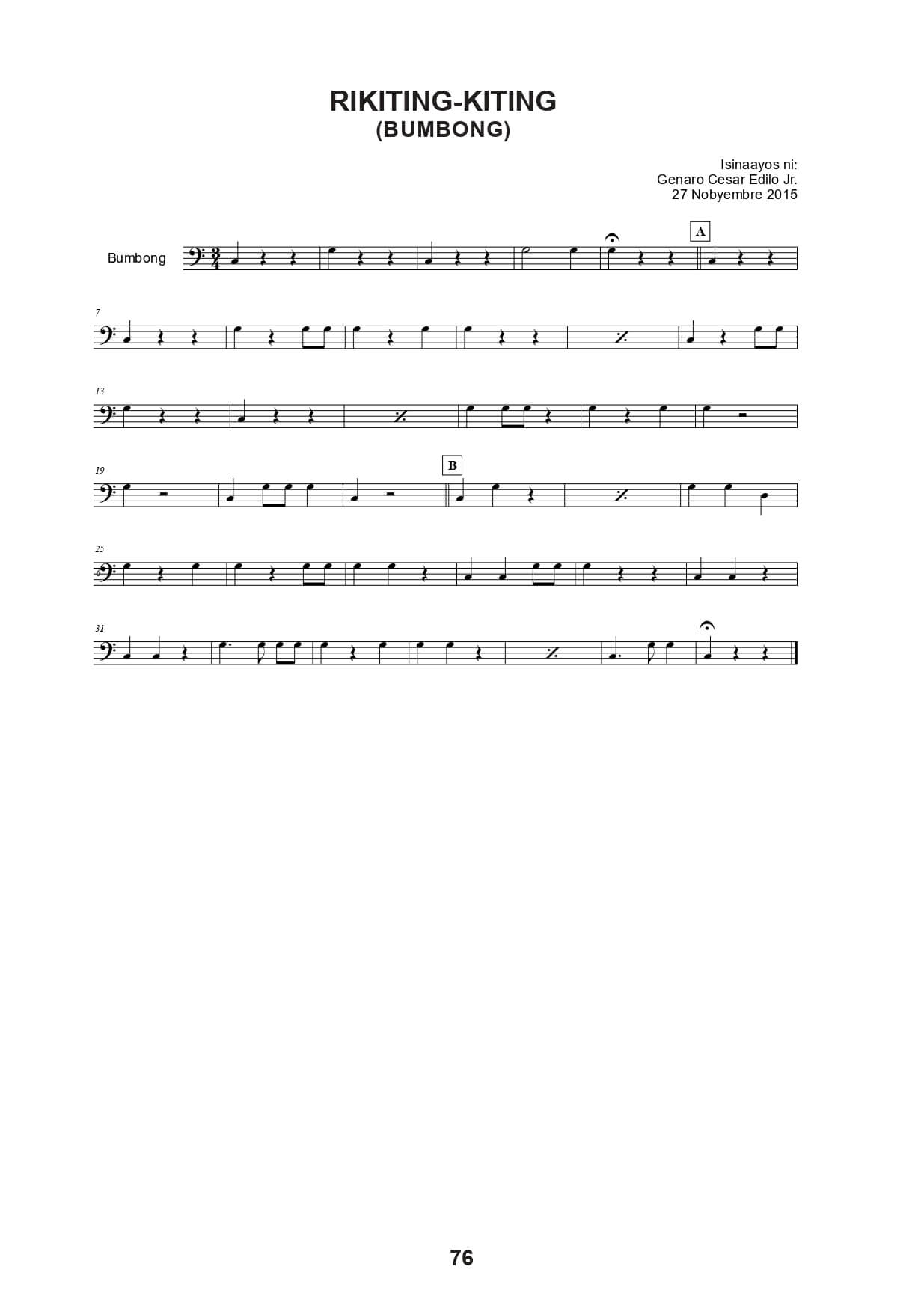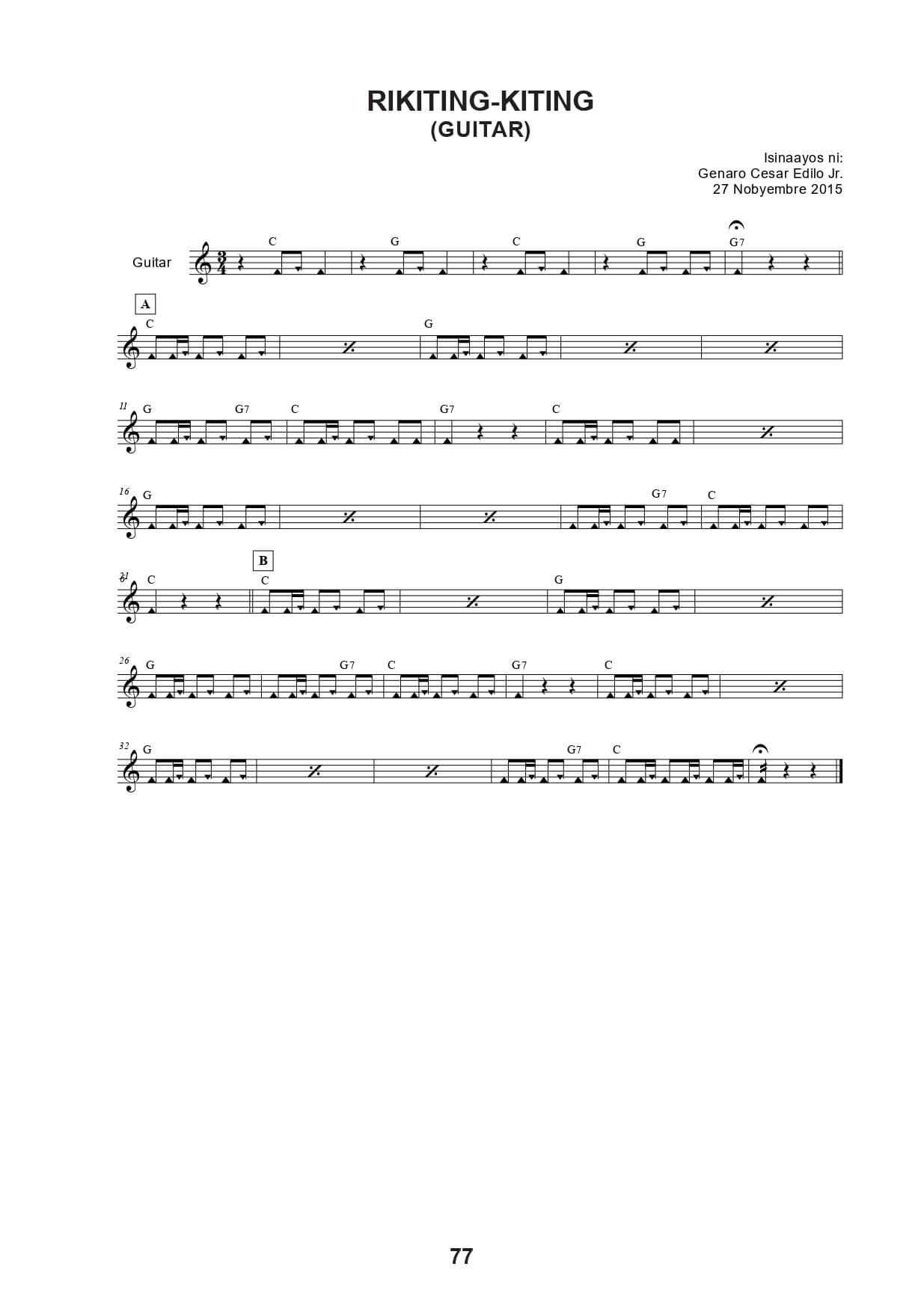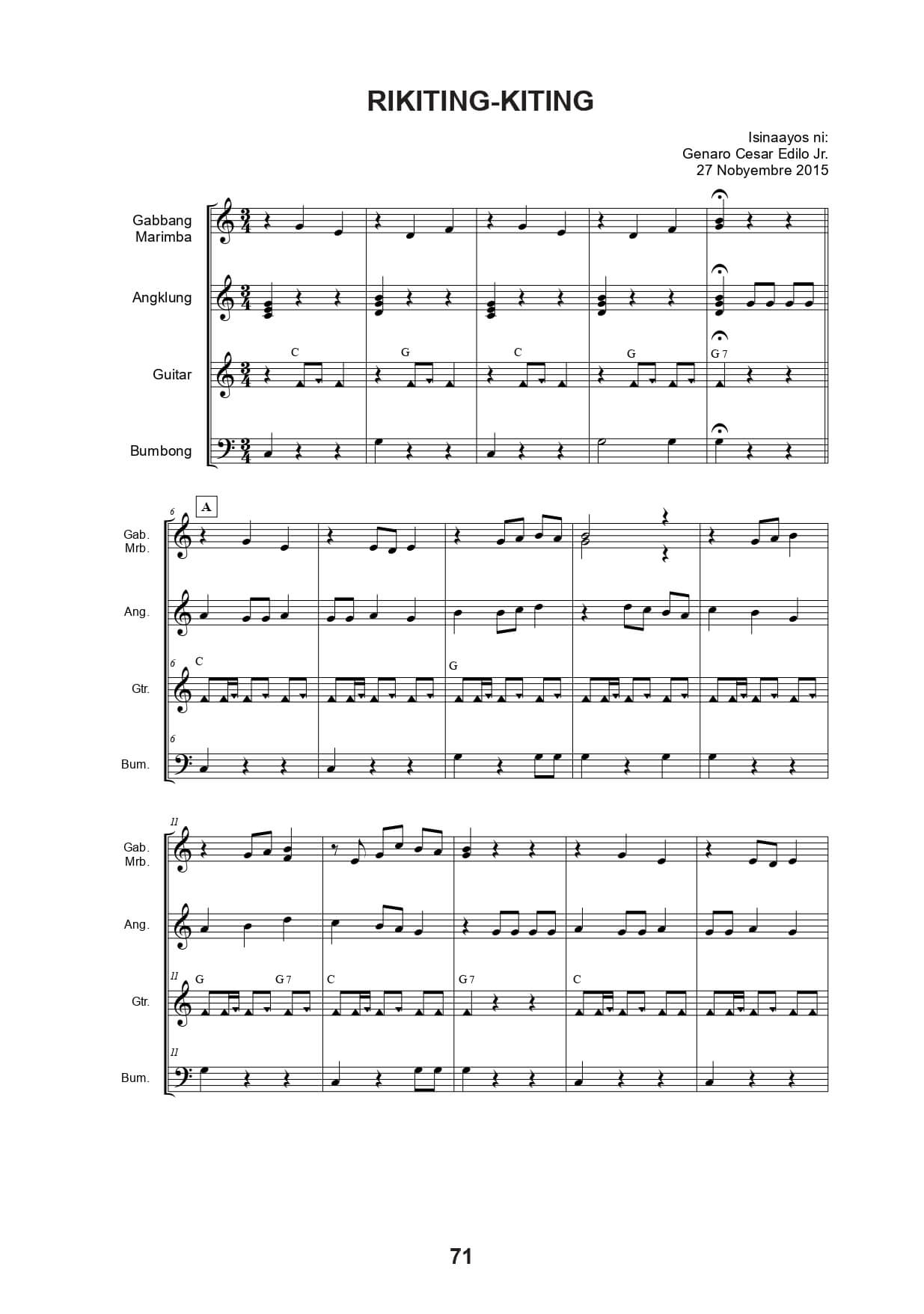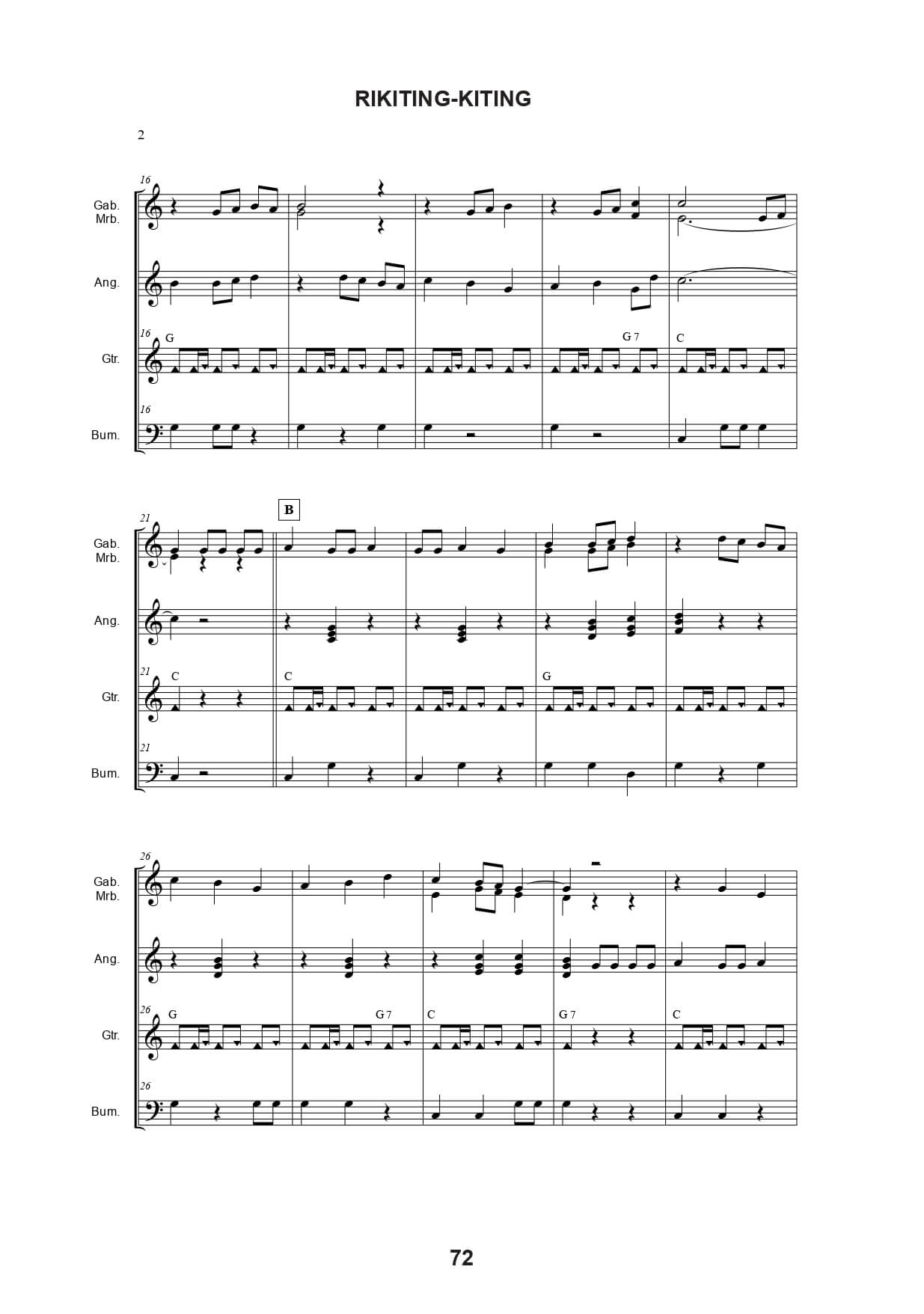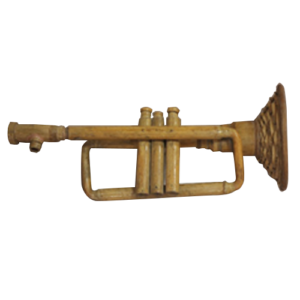Elementary Module
RIKITING-KITING REHEARSAL PLAN
- Volume 2
Background
Description: Tagalog Folk song / Komedya
Arranger: Genaro Cesar Edilo Jr.

Lyrics
Rikiting-kiting rikiting
Rikiting kiting rikiting
Halina’t awitin natin
Ang kantang rikiting
Rikiting kiting rikiting
Rikiting kiting rikiting
Halina’t awitin natin
Ang rikiting.
“Rikiting-kiting” is a nonsense folk song from the Tagalog region. The “Rikiting- kiting” is sung to give fun and humor. Like folk tales that often don’t have authors as these stories are told by the elders, folk songs have no known specific composers. We could not also tell when it was composed because this song has already passed on through words of mouth by the elders.
A. Materials 
Audio tracks – Scan QR code on the right
Sheet music – Rikiting-kiting arrangement by Genaro Cesar Edilo Jr.
B.Guide to the Piece
The piece is divided into two parts. After the introduction (measures 1 through 5), the angklung will play the melody and the gabbang / marimba will play the countermelody. The guitar will play the chords assigned following the rhythmic pattern given. The bumbong will play the bass part of the arrangement.
Time Allotment |
Material |
Instrument |
Measures |
Objective |
Activity |
Assessment |
|
| 5
minutes |
marimba/ gabbang guitar angklung bumbong | Prepare the members to play the instrument. | Arrange the instruments needed for the piece. | Materials and instruments should be complete and in good condition. | |||
| 15
minutes |
Warm up
/ Note Reading / Solfege |
marimba/ gabbang guitar angklung bumbong | Prepare the members to play the piece. | Play the legato, staccato etc. | The members of the group must execute the correct technique in playing. | ||
| 25
minutes |
Rikiting- kiting | marimba/ gabbang | 1–37 | Recognize the rhythmic | Show skill in sight reading. | The members of the group | |
| patterns from | should perform | ||||||
| the song. | Demonstrate the clapping rhythmic pattern. | the correct patterns. | |||||
| 20
minutes |
guitar | 1–37 | |||||
| 25
Minutes |
angklung | 1–37 | |||||
| 25
Minutes |
bumbong | 1–37 | |||||
| 25
minutes |
By section | 1–21 | Show precision in playing each part assigned. | Play the assigned instrument. | Repeat playing each assigned part on the | ||
| instrument as | |||||||
| Follow the | necessary. | ||||||
| given rhythmic | |||||||
| pattern. | |||||||
| Observe | |||||||
| fermata in | |||||||
| measure | |||||||
| number 5. | |||||||
| 20
minutes |
By section | 22–37 | Display precision in playing | Play the assigned instrument. | Repeat playing each assigned part on the instrument as necessary. | ||
| 30
minutes |
marimba/ gabbang | 1–37 | Perform the piece from | Show attentiveness | The members must make | ||
| guitar | beginning to | in playing their | sure that all | ||||
| angklung | end without | parts. | instruments | ||||
| bumbong | stopping. | are heard. | |||||
| Follow the | Therefore, the | ||||||
| Observe | conductor’s | sound must be | |||||
| dynamics, | signal. | balanced for all | |||||
| tempo, and | instruments to | ||||||
| other musical | Deliver proper | be heard. | |||||
| marks on the | execution of | ||||||
| piece. | dynamics. |
Science in a creative industry.
The DOST-FPRDI has a Bamboo Musical Instruments Innovation R&D program aimed at improving the quality of locally-made bamboo musical instruments (BMIs) through science and innovative technologies. The program seeks to standardize the production of selected BMIs, develop prototype designs, analyze raw material sources and existing markets, and build a BMI processing facility. In addition, the program aims to document the ethnocultural story behind several BMIs and identify the bamboo species used in BMI production to promote public awareness and appreciation of the cultural importance of these musical instruments. The program is a collaboration with the University of the Philippines and Philippine Normal University for teaching modules and analyzing sound quality and standardization of BMI design. The DOST Grants-in-Aid program provides funding.
PhBMI

